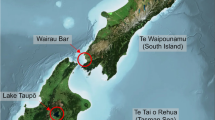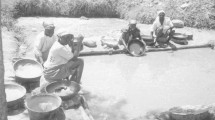Abstract
This paper approaches the safeguarding of Africa’s physical cultural resources in the context of development cooperation, infrastructure and environmental management. I focus on the World Bank’s physical cultural resource policy, as it constitutes to this day the most comprehensive tool for mitigating the adverse impacts of infrastructure development. However, it will also be shown that issues of noncompliance still persist in bank-financed projects, especially concerning Africa’s cultural resources. The European Commission’s policies toward heritage preservation will also be touched upon for purposes of contrast. I will close with suggestions for future activities that may have a positive impact on safeguarding those resources.
Résumé
Cet article traite la question de la protection du patrimoine culturel en Afrique dans le contexte de la coopération au développement, l’infrastructure et la gestion environnementale. L’accent est mis sur la politique opérationnelle de la Banque Mondiale car cela constitue actuellement l’outil le plus complet pour atténuer les impacts négatifs suite au développement industriel. Toutefois, il sera témoigné que les problèmes de non-conformité persistent dans les projets financés par la Banque Mondiale, particulièrement par rapport à la sauvegarde du patrimoine culturel. La politique de l’Union Européenne sur la protection du patrimoine culturel sera aussi mentionnée pour la comparer avec celle de la Banque Mondiale. L’article clôturera avec des suggestions pour des activités futures qui pourront avoir un impact positif sur la sauvegarde de ces ressources.
Similar content being viewed by others
Notes
See for instance Intergovernmental Conference on Cultural Policies for Development, held in Stockholm in 1998 (www.unesco.org/cpp).
At around the same time, the Council of Europe commissioned its own review on culture and development, which resulted in the report “In from the Margins” (1998). In 1992, the World Bank organized a conference on “Culture and Development in Africa,” in which several Africanist archaeologists and cultural heritage specialists took part (Serageldin and Taboroff 1994).
UNESCO Mexico City Declaration on Cultural Policies, World Conference on Cultural Policies, Mexico City, July 26–August 6, 1982.
It needs to be said that in July 2009, a letter was sent to the World Bank regarding the above mentioned projects, signed by Paul Lane as former president of the Society of Africanist Archaeologists (SAfA), Pierre de Maret, Scott MacEachern and the author. The World Bank has responded positively to our queries on the issues of noncompliance and took up contact with all national institutions responsible for heritage preservation in order to initiate an archaeological assessment for each project.
References
Aitchison, K. (2000). The funding of professional archaeological practice in England. Cultural Trends, 10(39), 1–32.
Arazi, N. (2009). Cultural research management in Africa: challenges, dangers and opportunities. Azania: Archaeological Research in Africa, 44(1), 95–106.
Bauman, N., & Winter, S. (2005). Guidelines for involving heritage specialists in EIA processes. South Africa: Provincial Government of the Western Cape: Department of Environmental Affairs and Development Planning.
Brandt, S. A. (2000). A tale of two World Bank-financed dam projects in the Horn of Africa. In S. A. Brandt and F. Hassan (Eds.), Dams and cultural heritage management (pp. 6–33). Working paper submitted to the World Commission on Dams.
Campbell, I. (2000). Environmental impact assessment, cultural heritage and dams in eastern Africa. In S.A. Brandt and F. Hassan (Eds.), Dams and cultural heritage management (pp. 39–43).Working Paper submitted to the World Commission on Dams.
Campbell, I. (2009). The World Bank. Physical cultural resources safeguard policy. Guidebook. Washington D.C: The World Bank.
Cotonou Agreement (2005). http://ec.europa.eu/europeaid/where/acp/overview/cotonou-agreement/index_en.htm, Accessed 17 Mar 2010.
Council of Europe. (1998). In from the margins. A contribution to the debate of culture and development in Europe. The European Task Force on Culture and Development. Council of Europe Publishing.
Economic Commission for Africa (ECA) (2005). Review of the application of environmental impact assessment in selected African countries. Addis Ababa: ECA Printshop. www.uneca.org. Accessed 4 Feb 2010.
European Commission (2009). Culture and creativity: vectors for development. http://www.culture-dev.eu/www/website.php?lang=en. Accessed 9 Sept 2010.
Fleming, A., & Campbell, I. (2010). Cultural heritage and the development process: Policies and performance standards of the world bank group. In P. M. Messenger & G. S. Smith (Eds.), Cultural heritage management: A global perspective. Gainesville: University Press of Florida.
Gauff Ingenieure (2004). Consultancy services for the feasibility study and detailed engineering design for upgrading to paved bitumen standard of the Soroti–Lira road., Vol. 4A. Environmental and Social Impact Assessment Study, Uganda.
Héau, L. (2009). Inventory and synthetic summary of cultural cooperation activities between the European Commission and African, Caribbean and Pacific States. European Commission. www.culture-dev.eu/www.documentation.../culture-dev.eu-bilan-en.pdf. Accessed 17 Mar 2011.
Ingénieurs Conseils (2006). Etudes d’impact environnemental des travaux de construction de 670 km de pistes rurales prioritaires dans les regions de Koulikoro, Mopti, Tombouctou et Gao. Mali.
MacEachern, S. (2001). Cultural resource management and Africanist archaeology. Antiquity, 75, 866–871.
MacEachern, S. (2010). Seeing like an oil company’s CRM programme: Exxon and archaeology on the Chad Export Project. Journal of Social Archaeology, 10, 347–366.
Mumma, A. (2008). Framework for legislation on immovable cultural heritage in Africa. In W. Ndoro, A. Mumma, & G. Abungu (Eds.), Cultural heritage and the law: Protecting immovable heritage in sub-Saharan Africa (pp. 97–108). Rome: ICCROM Conservation Studies 8.
Munjeri, D. (2008). Introduction to international conventions and charters on immovable cultural heritage. In W. Ndoro, A. Mumma, & G. Abungu (Eds.), Cultural heritage and the law: Protecting immovable heritage in sub-Saharan Africa (pp. 13–23). Rome: ICCROM Conservation Studies 8.
Naffé, B. O. M., Lanfranchi, R., & Schlanger, N. (Eds.) (2008). L’archéologie préventive en Afrique. Saint-Maur-des-Fossés: Editions Sépia.
Ndoro, W., & Kiriama, H. (2008). Management mechanisms in heritage legislation. In W. Ndoro, A. Mummaand, & G. Abungu (Eds.), Cultural heritage and the law: Protecting immovable heritage in sub-Saharan Africa (pp. 53–62). Rome: ICCROM Conservation Studies 8.
Ndoro, W., Mumma, A., & Abungu, G. (2008). Cultural heritage and the law: Protecting immovable heritage in sub-Saharan Africa. Rome: ICCROM Conservation Studies 8.
Nicholson, S., & Riesco, I. L. (2007). Environmental tools in EC development cooperation: Transparency and public availability of documentation. Brussels: Birdlife International, FERN and WWF. http://assets.panda.org/downloads/transparency.pdf. Accessed 9 Sept 2010.
Organisation for Economic Cooperation and Development (1992). The Polluter Pays Principle, OECD Analysis and Recommendations. Paris 1992. http://www.oecd.org/newsearch/0,3766,en_2649_201185_1_1_1_1_1,00.html?q=polluter+pays+prinicple&sa=Search&cx=012432601748511391518%3Axzeadub0b0a&cof=FORID%3A11&ie=UTF-8#1219
Report of the World Commission on Culture and Development. (1995). Our creative diversity. France: EGOPRIM.
Republic of Botswana (2001). Monument and Relics Act. http://www.gov.bw/en/Ministries--Authorities/Ministries/Ministry-of-Environment--Wildlife-and-Tourism/Tools--Services/Services--Forms/Evaluation-of-Pre-development-Archaeological-Impact-Assessments/. Accessed 10 Sept 2010.
Republic of Namibia (2004). National Heritage Act 27. http://www.parliament.gov.na/acts/acts.php?list_id=50&page=2. Accessed 10 Sept 2010.
Sai Consulting Engineers Pvt. Ltd. (2008). Consultancy services for the economic feasibility and detailed engineering design studies for the pavement strengthening of Kintampo–Paga road (396 km). Ghana: Environmental Impact Assessment.
Serageldin, I., & Taboroff, J. (Eds.) (1994). Culture and development in Africa. Proceedings of an international conference held at the World Bank, Washington. D.C., April 2 and 3 1992. Washington, D.C.: World Bank.
Yousfi, H. (2007). Culture and development: A review of literature—the continuing tension between modern standards and local contexts. Agence Française de Développement Working Paper No. 50.
Acknowledgments
I would like to thank Federica Sulas and Stephanie Wynne-Jones for having organized a very timely and stimulating conference on Africa’s Fragile Heritage in October of 2009 and for their invitation to Cambridge. Special thanks go to Federica Sulas for her support and encouragement to publish this piece and her helpful comments. Special thanks also go to Prof. Pierre de Maret and his continued involvement and support for Heritage Management Services, and lastly I would like to thank Arlene Fleming, who has assisted me in identifying the right people at the World Bank to whom we could address our enquiries concerning compliance.
Author information
Authors and Affiliations
Corresponding author
Rights and permissions
About this article
Cite this article
Arazi, N. Safeguarding Archaeological Cultural Resources in Africa—Policies, Methods and Issues of (Non) Compliance. Afr Archaeol Rev 28, 27–38 (2011). https://doi.org/10.1007/s10437-011-9090-8
Published:
Issue Date:
DOI: https://doi.org/10.1007/s10437-011-9090-8




